本文共 1278 字,大约阅读时间需要 4 分钟。
文章目录
前言
我们知道在一个存储系统中,不光光只有它所存储的数据文件重要,它的存储系统的元数据管理同样十分的重要。因为涉及到存储系统数据访问操作时,会经过存储系统元数据的查询或更新操作,如果元数据这边的操作出现性能瓶颈,同样会导致用户访问数据的行为出现缓慢的情况。本文我们来聊聊存储系统一般是如何做高效的元数据管理的,这里面会涉及到多种不同的元数据管理方式。
初代元数据管理
首先我们来看最简单原始的初代存储系统元数据管理方式,此时元数据往往存储于外部db中,然后master服务和db进行数据的交互,如下图所示:
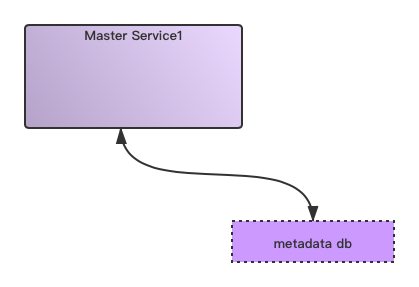 这个版本的存储系统需要保证的是操作流程的流畅性处理,与此同时整个系统所维护的元数据体量也不是很大。
这个版本的存储系统需要保证的是操作流程的流畅性处理,与此同时整个系统所维护的元数据体量也不是很大。 内存式元数据管理
当我们需要对元数据的访问操作又更高的要求时,我们会自然想到的一种做法是将元数据load到服务内存中,来加速元数据的访问。然后我们会看到如下内存管理式的元数据管理,master服务在初启动后加载外部元数据db文件到内存中。
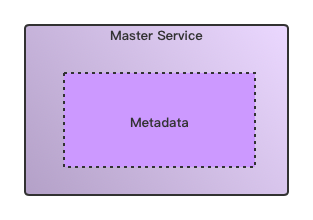
分区元数据管理
一台机器的内存容量是有限的,但是元数据规模是可以随着业务不断扩张的,这时就会出现一个内存的bottleneck的问题。这个时候怎么来优化这个事情呢?答案很简单,一个字:拆!我们将元数据按照给定规则进行partition的分拆,然后启动多个master服务来管理各自的应该维护的元数据,效果图如下所示:
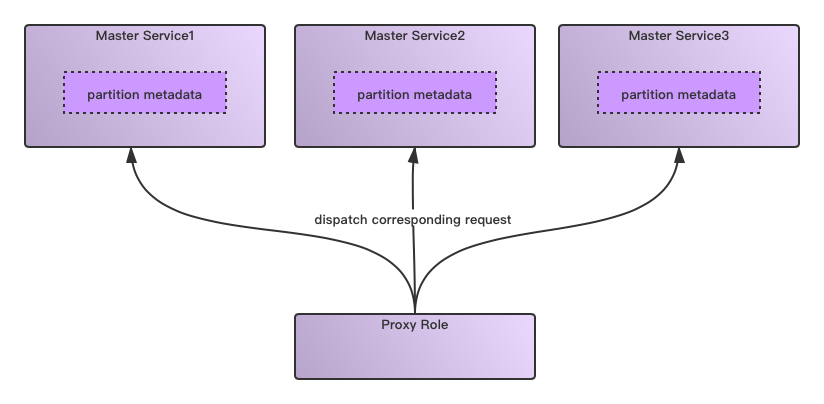 因为在这里实际服务的service变为了多个,对于属于不同partition的元数据操作,系统应让请求转发到对应所属的服务上面去,因此在service前面还需要一个Proxy Role这样的角色在请求的转发。这个设计一个比较典型的例子是HDFS的Federation方案,然后Proxy Role是client端的ViewFs,或者是HDFS RBF功能的Router角色。
因为在这里实际服务的service变为了多个,对于属于不同partition的元数据操作,系统应让请求转发到对应所属的服务上面去,因此在service前面还需要一个Proxy Role这样的角色在请求的转发。这个设计一个比较典型的例子是HDFS的Federation方案,然后Proxy Role是client端的ViewFs,或者是HDFS RBF功能的Router角色。 分层级元数据管理
当元数据管理再进一步加大的时候,我们还能如何拓展单个节点元数据管理能力的极限呢?比如从支持百万级别量级文件到数十亿级别体量文件。将数十亿级别量级文件元数据全部load到机器内存已经是一件不太靠谱的做法了。这个时候我们有一种新的元数据管理系统模式:分层级的元数据管理,官方术语的称呼叫做Tier layer的元数据管理。
这里主要分为两种layer:
- 最近访问的热点元数据,做内存缓存,叫做cached layer。
- 很久没有访问过的数据((也可称作冷数据),做持久化保存存,叫做persisted layer。
热点数据和冷数据根据用户的访问频率行为可以互相之间做转换,类似如下所示:
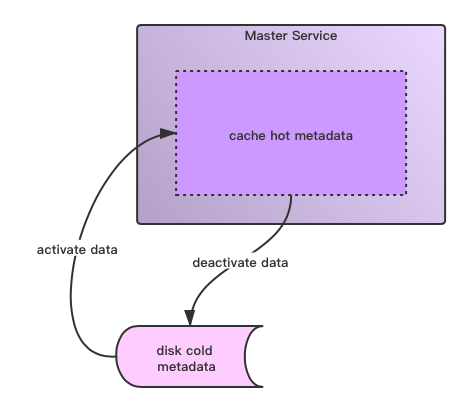 在此模式系统下,服务只cache当前active的数据,所以也就不会有内存瓶颈这样的问题。
在此模式系统下,服务只cache当前active的数据,所以也就不会有内存瓶颈这样的问题。 下图是一个此模式的样例系统Alluxio的元数据管理模型图:
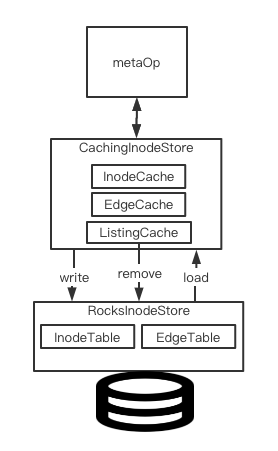 以上就是本文所要阐述的关于存储系统常见的元数据管理模式。
以上就是本文所要阐述的关于存储系统常见的元数据管理模式。 引用
[1].https://docs.alluxio.io/os/user/stable/en/operation/Journal.html#backing-up-the-journal
转载地址:http://tyng.baihongyu.com/